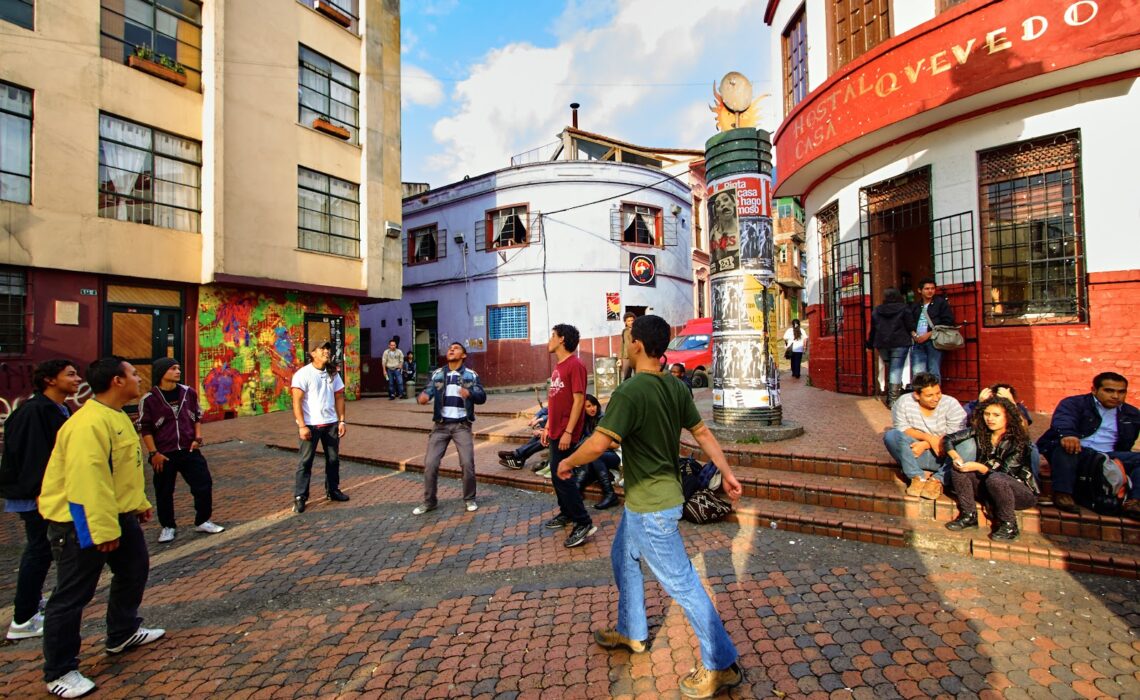
Accessibility is a crucial component of guaranteeing equal rights and opportunities for all people, including those with disabilities, in today’s world of growing interconnectedness.
The deaf community is one that encounters special difficulties in entering public areas.
In Colombia, there are efforts being made to improve the accessibility of public spaces for the deaf, and technology is a key component of these efforts.
This article examines the value of accessible public areas in Colombia and how technology is enhancing the physical environment for the deaf.
Enhancing Communication Accessibility
Human interaction requires communication, which for the deaf community frequently poses significant obstacles.
Technology-enabled accessible public spaces can close this gap by giving deaf people efficient communication tools.
One such innovation is video relay services (VRS), which enables callers to use sign language.
Deaf people can communicate more effectively and independently by installing VRS booths in public places like hospitals, government buildings, and educational institutions.
They can now access a variety of services without the aid of a sign language interpreter thanks to technology, giving them the freedom to live their lives as they see fit.
In addition, digital communication tools like social media, messaging apps, and video conferencing have completely changed how people connect and communicate.
By integrating these technologies into public settings, deaf and hearing people can converse in real time, removing barriers to communication and promoting inclusivity.
Navigating Public Spaces
The improvement of deaf people’s navigation should be a priority for accessible public spaces.
For people who are deaf, conventional audio-based systems like public address announcements present difficulties. But technology also provides creative answers to these problems.
For example, installing visual alert systems in crowded places like train stations can give people visual cues for important announcements like train arrivals, schedule changes, or emergency alerts.
These visual alerts, which can take the form of text messages or flashing lights, can be used to make sure deaf people are aware of urgent information in real time.
Digital mapping programs and GPS technologies have evolved into indispensable tools for navigating the real world in addition to visual alerts.
These tools can be used to produce accessible maps that are specially created for the deaf community and highlight facilities that are accessible to the deaf community as well as provide information on accessible routes.
Deaf people who use existing navigation apps can find accessible entrances, ramps, and other facilities in public places with the help of such features.
This improves their mobility and fosters a sense of inclusion and independence.
Educational Opportunities
The educational opportunities available to deaf people are significantly impacted by accessible public spaces.
The availability of creative solutions that meet a range of learning needs has revolutionized the field of education.
Deaf people can benefit from rich learning opportunities, for instance, through the use of interactive digital displays in museums and exhibition halls.
For deaf visitors, these displays can include sign language videos, captions, and visual representations to effectively communicate information.
Similar to this, virtual reality (VR) and augmented reality (AR) technologies can produce immersive learning environments that enable deaf students to visually engage with historical sites, scientific ideas, or cultural landmarks.
In addition, the development of online learning environments has facilitated inclusive education.
These platforms give deaf people the chance to interact with peers and instructors, take part in online courses, and access educational resources all from the convenience of their own homes.
Deaf students can overcome geographic and logistical barriers to education, opening up a world of knowledge and opportunities, by having accessible technology in public places like libraries or community centers.
Promoting Employment and Economic Inclusion
For deaf people to have access to jobs and other economic opportunities, public spaces must be accessible.
The way we work has changed as a result of technology, which has created new opportunities for remote work, freelancing, and entrepreneurship.
Deaf people can actively participate in the workforce and contribute to the nation’s economy by making sure that public spaces are outfitted with accessible technology.
Finding a job and networking are important aspects of employment. In the current job market, professional networking sites and online job boards have become indispensable resources.
When accessible technology is available in public areas like career centers or co-working spaces, deaf people can use these platforms to look for jobs, build professional profiles, and network with employers.
Furthermore, open areas can host networking gatherings and job fairs tailored especially to the requirements of the deaf community, promoting employment opportunities and fostering deep connections.
Social Inclusion and Community Engagement
Accessible public areas give the deaf the chance to interact with their surroundings and take part in social activities.
Through the creation of channels for community engagement, information sharing, and communication, technology significantly contributes to social inclusion.
Platforms on social media have developed into effective means of communication, experience sharing, and issue awareness.
Deaf people can access social media platforms, sign up for online communities, and actively participate in discussions by placing accessible technology in public areas like community centers or recreational areas.
Through these platforms, deaf people can express themselves, tell their stories, and develop deep connections with others, which promotes a sense of community and social integration.
Conclusion
For a society to be inclusive and allow deaf people to actively participate and contribute, accessible public spaces are essential.
The physical environment for deaf people in Colombia has been significantly improved thanks to technology.
Technology helps deaf people overcome obstacles and actively participate in society by enhancing communication accessibility, enhancing navigation, expanding educational opportunities, promoting employment and economic inclusion, and fostering social engagement.
To guarantee equal rights and opportunities for all people, regardless of their hearing abilities, it is critical for policymakers, organizations, and communities to keep investing in accessible technology and prioritize the creation of inclusive public spaces.
For those who are looking for additional support, Unspoken Language Services offers interpreting services to help bridge the communication gap between the deaf and hearing communities.
Thumbnail Photo Credit to: Photo by Szeke

